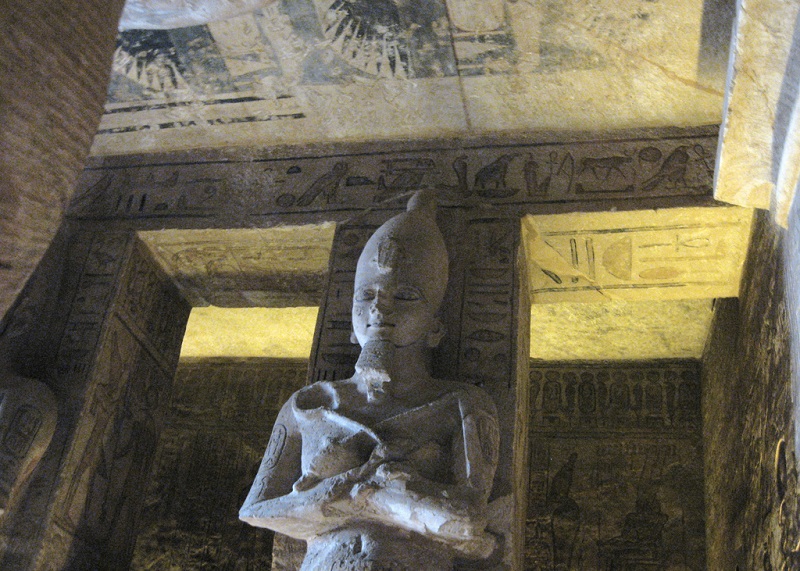Abu Simbel a Festival of the Sun
In the desert at Abu Simbel, Egypt, there are two 3000 year old temples carved into the cliffs. One, to honour Nefertari, the favourite wife of the pharaoh Ramses II and the second, the Great Sun Temple, a monument to the pharaoh himself.
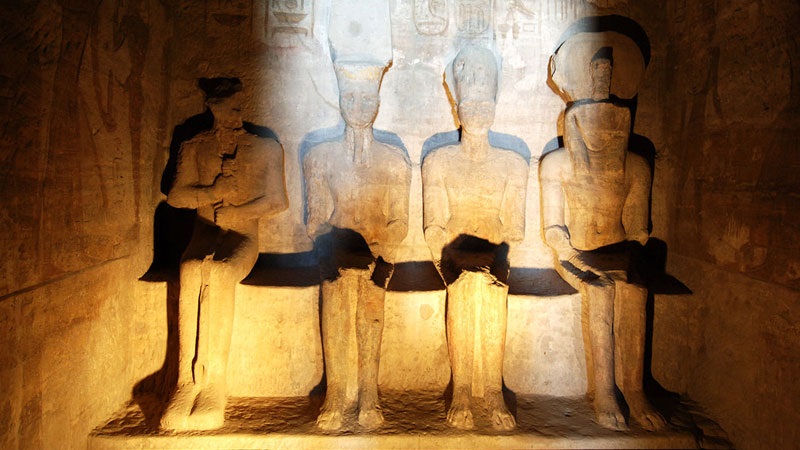
Light spears the darkness, illuminating the statues carved inside Abu Simbel’s Great Temple. (Image: Ye Wang)
On two days a year – February 21 and October 22 – the small desert oasis town hosts a festival of music, dance and food. The highlight, as it has been for 3000 years, is the sunrise on the Great Temple. The entrance is sited to allow a beam of sunlight from the rising sun to illuminate three – Ramses, Ra and Amun – of the four statues deep inside the Sanctuary, beyond the Hypostle Hall. The fourth statue – the god if the underworld Ptah – remains forever in darkness.
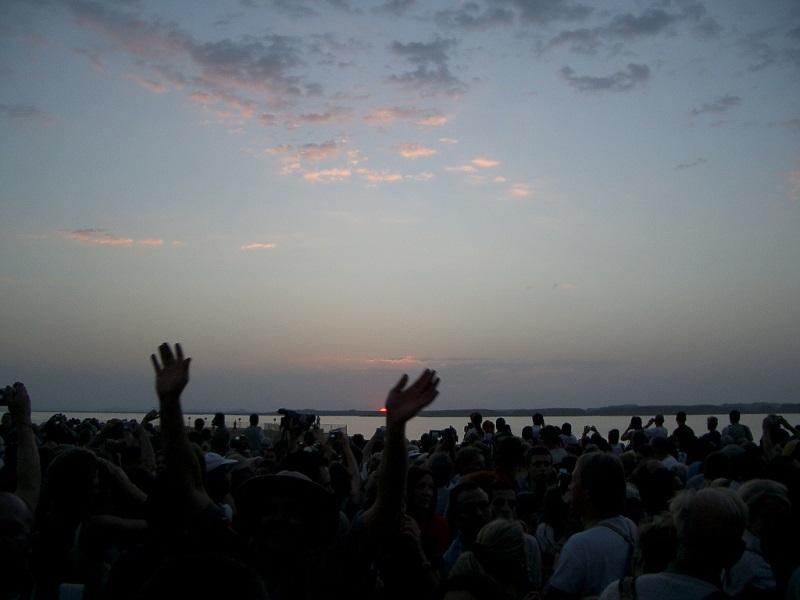
Dawn breaks over the crowd at Abu Simbel. (Image: Paul Nendick)
Visitors must travel by night, and thousands arrive in darkness at about 03.00 for the event. A lucky few enter the temple but the majority watch on a screen outside for the moment when the pale sunlight finally illuminates the statues of the deities.
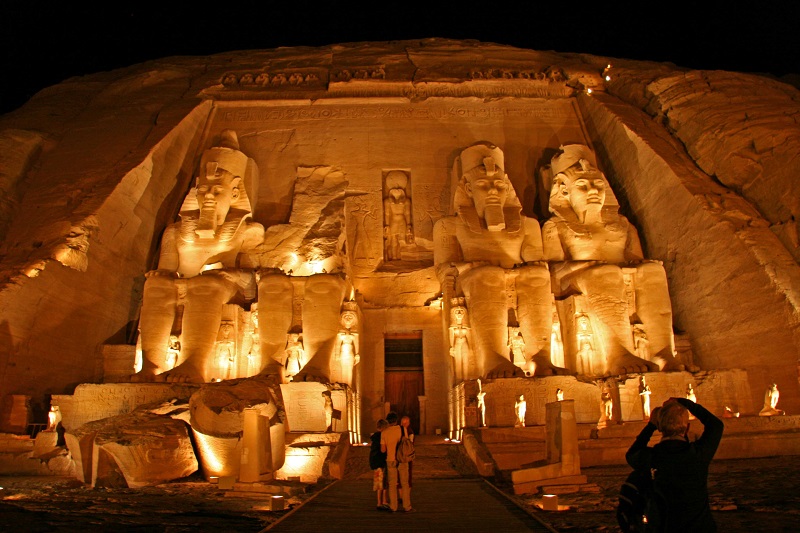
The entrance to the Great Temple at Abu Simbel guarded by 32 metre tall statues. (Image: Egypt Tourism)

The Great Temple lit up at night during the Abu Simbel festival. (Image: Laura Cutter)
After centuries covered by the shifting Sahara sands, the temple was in danger of being covered by the waters of the Assam Dam. In the 1960’s UNESCO rescued the temples and moved them block by bock into the side of a man made mountain on the shores of Lake Nasser.
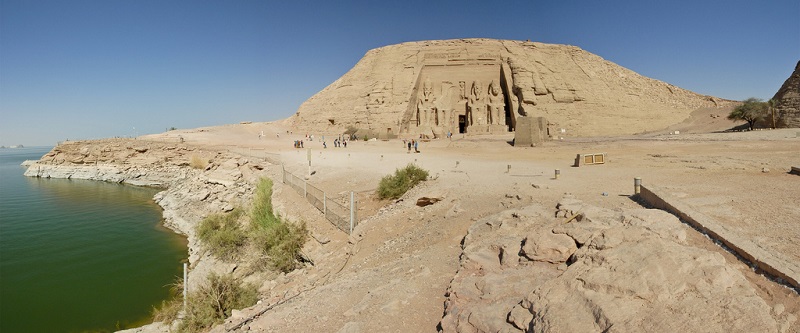
The temples on the shores of Lake Nasser. (Image: SJ Pinkney)
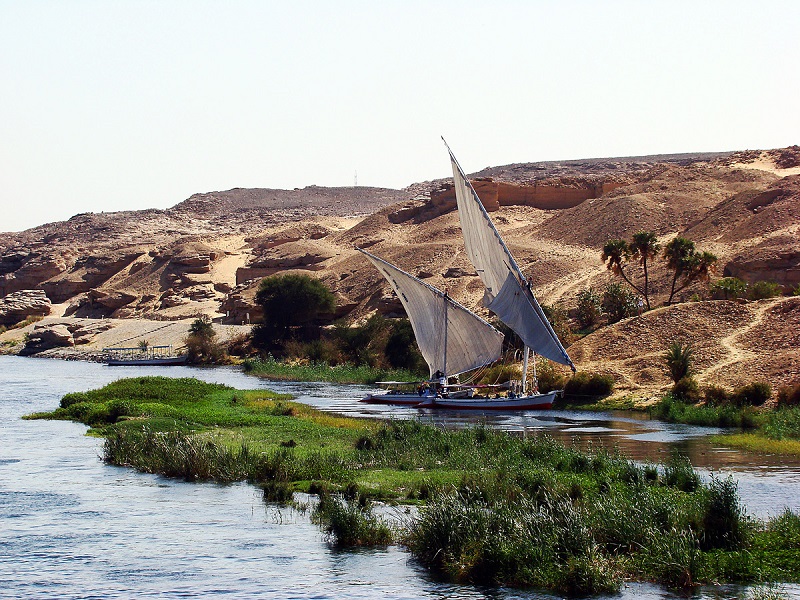
A river dhow on Lake Nasser. (Image: Lucia y Marcos)
Ramses guards the entrance, that opens into a grand hall that separates into two smaller treasure rooms. Deeper into the labrynth you find the Hypostyle hall filled with pillars with portatraits of Ramses and his family and a history of his reign.
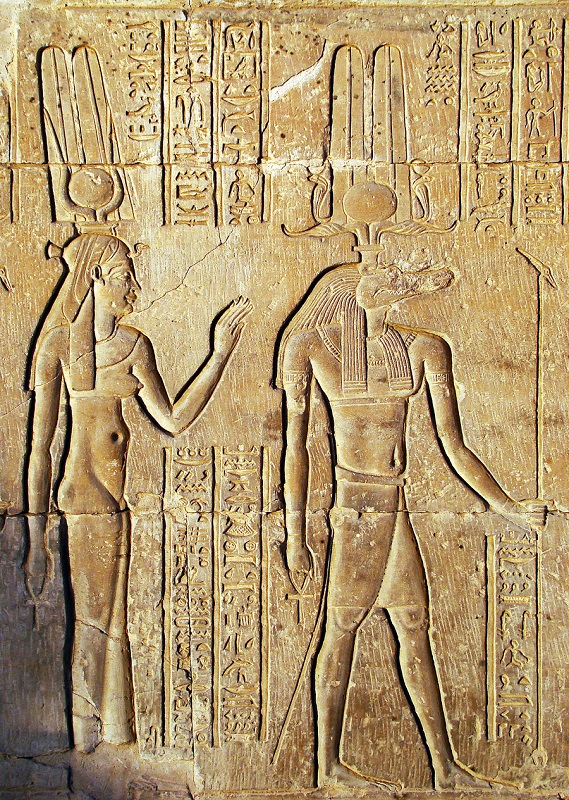
(Image: Lucia y Marcos)

(Image: Remster_9)
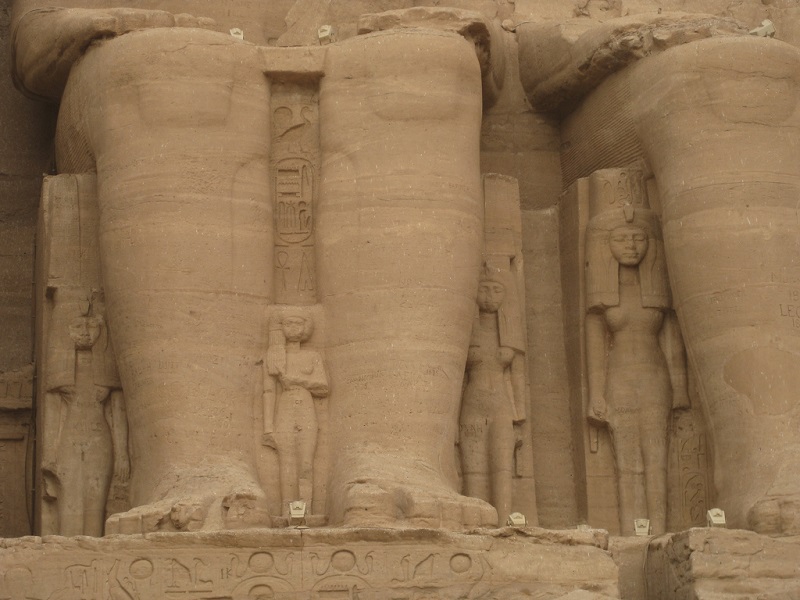
The primary facade of the temple to Rameses II at Abu Simbel, depicting the smaller statues of the queen Nefertari, the queen mother Mut-Tuy, and the pharaoh’s children. (Image: Lisa Haney)
